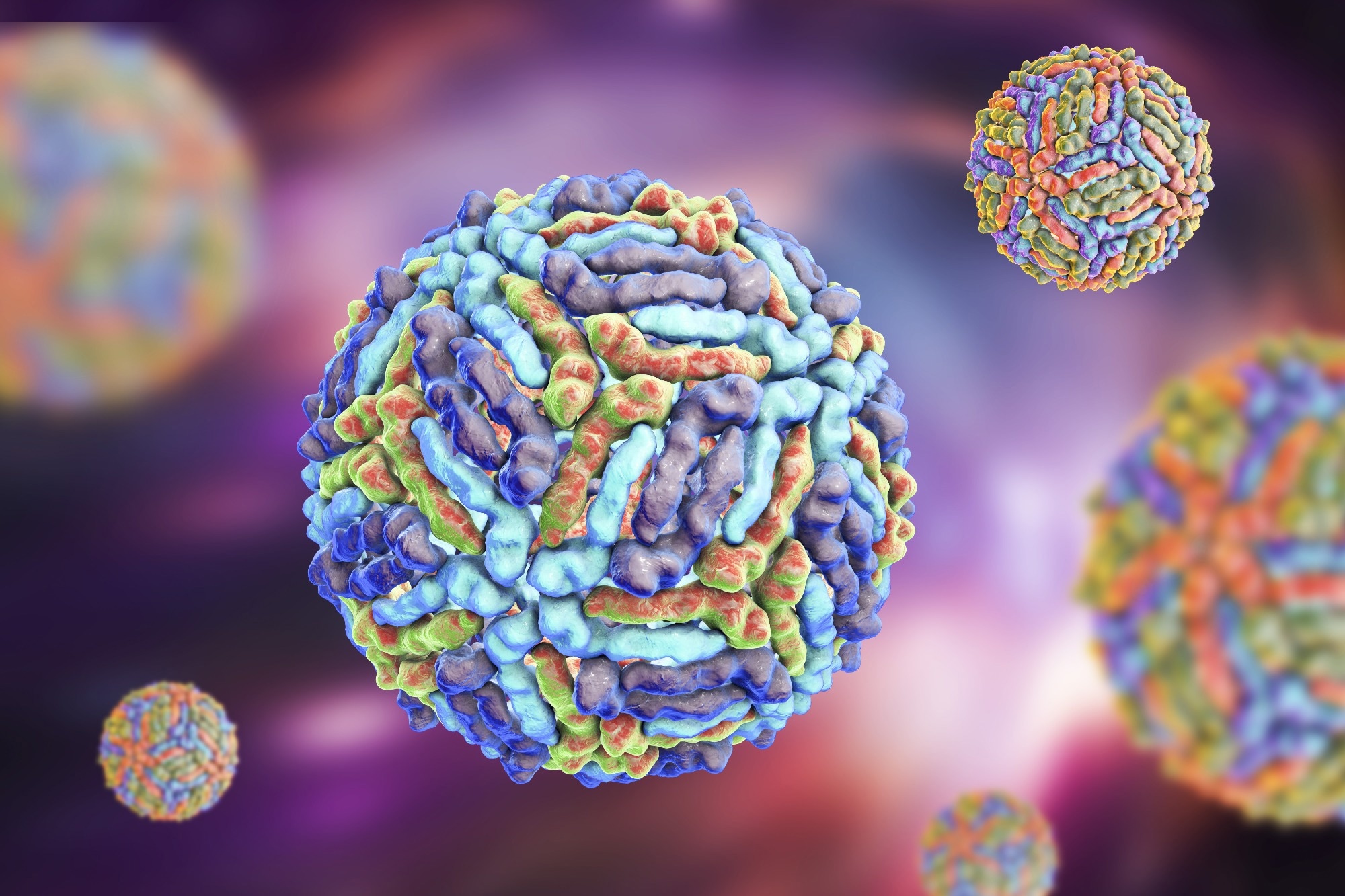A recent study published in the United States Centers for Disease Control and Prevention (CDC) Morbidity and Mortality Weekly Report discusses the surveillance of West Nile virus (WNV) and other arboviruses in the United States.
 Study: West Nile Virus and Other Nationally Notifiable Arboviral Diseases — United States, 2021. Image Credit: Kateryna Kon / Shutterstock.com
Study: West Nile Virus and Other Nationally Notifiable Arboviral Diseases — United States, 2021. Image Credit: Kateryna Kon / Shutterstock.com
What are arboviruses?
WNV remains the leading cause of arboviral diseases in the continental U.S. Arboviral transmission is maintained between arthropods and vertebrates; however, humans can become infected with arboviruses when bitten by infected mosquitos or ticks.
In humans, infection is primarily asymptomatic. In symptomatic cases, a systemic febrile often occurs, whereas fevers are less frequently observed in neuroinvasive disease.
About the study
In the U.S., arboviral disease cases are reported by states to the CDC through the ArboNET surveillance system.
Probable and confirmed cases of WNV were included in the analysis. Likely, cases met the clinical criteria for arboviral disease and had virus-specific immunoglobulin M (IgM) antibodies in serum or cerebrospinal fluid (CSF).
Confirmed cases met the clinical criteria and at least one laboratory criterion. Laboratory criteria included virus isolation from or detection of viral nucleic acid or antigen in blood, tissues, or CSF, virus-specific immunoglobulin M (IgM) and neutralizing antibodies in serum over a four-fold change in virus-specific antibody titers in paired serum samples, and IgM in CSF with no antibodies against other endemic arboviruses.
Cases with acute flaccid paralysis, encephalitis, meningitis, or other neurological illnesses were classified as neuroinvasive. Disease incidence was estimated using neuroinvasive disease cases and the U.S. Census Bureau's 2021 population estimates.
In 2021, 3,035 cases of arboviral disease occurred, including 2,113 neuroinvasive cases. These cases were primarily caused by the easter equine encephalitis virus, Jamestown Canyon virus, La Crosse virus, Powassan virus, St. Louis encephalitis virus, WNV, and viruses of unspecified serogroups.
About 16% of counties in the U.S. reported at least one case. Overall, 432 counties reported 2,911 WNV disease cases.
The median age of patients was 65, with 71% of patients experiencing disease onset between July and September and 72% ultimately requiring hospitalization. About 8% of patients died, whose median age was 75.
Among WNV cases, 2,008 were neuroinvasive and involved encephalitis, meningitis, acute flaccid paralysis, and unspecified neurological illnesses in 64%, 30%, 2%, and 4% of patients, respectively. The national incidence of WNV neuroinvasive disease was 0.61 per 100,000 individuals, with the proportion of WNV neuroinvasive cases in 2021 being higher than in 2010-2020 reports.
Arizona reported most WNV neuroinvasive cases, with three counties accounting for over 50% of national cases. WNV disease incidence increased with age and was 60% higher in males.
Eight jurisdictions reported 40 cases of La Crosse virus disease, with a median age of six years, as 88% of these infections occurred in those under 18. Disease onset occurred between July and September.
All La Crosse virus cases required hospitalization, and no deaths were reported; however, 98% of patients experienced neuroinvasive disease. Ohio, North Carolina, and Tennessee had the highest incidences of neuroinvasive disease due to La Crosse viral infection.
Jamestown Canyon virus disease occurred in 32 individuals across eight jurisdictions, with a median age of 59. Disease onset occurred between April and November.
About 66% of Jamestown Canyon cases were neuroinvasive, with New Hampshire and Rhode Island reporting the highest incidence of neuroinvasive disease. About 75% of these patients were hospitalized, and two deaths were reported.
Four states reported five equine encephalitis virus disease cases, all of which were neuroinvasive and required hospitalization, and two deaths occurred.
Seventeen St. Louis encephalitis virus disease cases were reported across three states, with a median age of 75, including 11 neuroinvasive cases. Fifteen cases required hospitalization, and no individuals died.
Eight jurisdictions reported 24 cases of Powassan virus disease. Twenty-three patients were neuroinvasive, whereas 22 were hospitalized, and three died.
Conclusions
WNV was the most common arboviral disease in the U.S. in 2021, with its highest incidence reported in 2021 since 2012. This rise in arboviral infections was mainly due to the outbreak in Arizona, which occurred much later in the year than previous viral outbreaks.
Ohio and Indiana reported cases of Powassan and Jamestown Canyon viruses, respectively, for the first time in 2021. Detection in new jurisdictions may indicate geographic expansion and increased awareness and testing.
Understanding the pathogens' geographic distribution, epidemiology, and seasonality helps in clinical recognition and informs vector control efforts. Continued surveillance is necessary to guide and promote prevention.
Due to the lack of specific treatments and vaccines, prevention depends on personal protective measures, blood donor screening, and vector population control.
Journal reference:
- Fagre, A. C., Lyons, S., Staples, J. E., & Lindsey N. (2023). West Nile Virus and Other Nationally Notifiable Arboviral Diseases — United States, 2021. Morbidity and Mortality Weekly Report. doi:10.15585/mmwr.mm7234a1